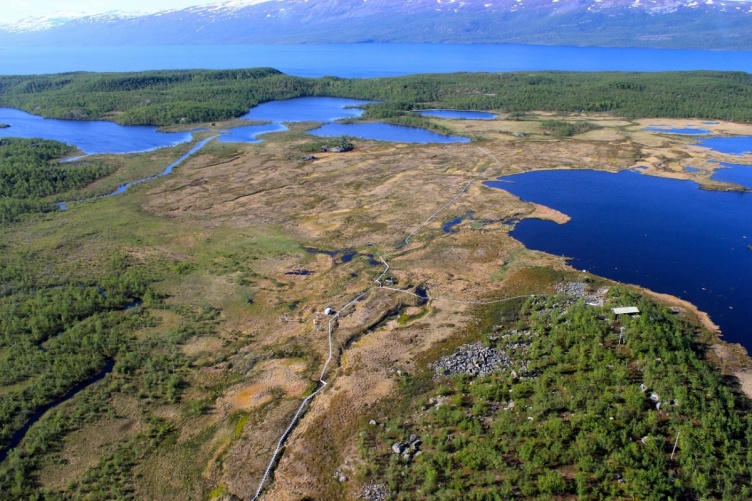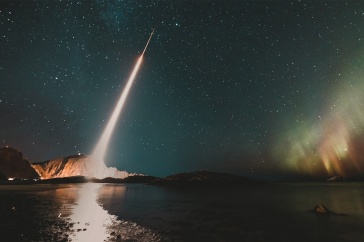
Photo credit: Scott Saleska.
Researchers at the University of New Hampshire have been awarded a three-year grant totaling $3.4 million from the U.S. Department of Energy. The team will study the thawing of Arctic permafrost — ground or soil that remains frozen throughout the year — to see its effects on lakes and streams, potentially converting into methane or carbon dioxide, greenhouse gases that can fuel climate change.
“We know that the Arctic is warming at four times the rate of other places and when these frozen areas begin to thaw carbon — dead plant material — can be released into nearby lakes and streams where it can then be converted into gas emissions by microbes that further fuel the thawing cycle,” says Ruth Varner, professor of Earth sciences and lead principal investigator of the study. “Simply put, more methane equals more warming and trying to figure out the link between these microbes and the gas emissions is critical for dealing with climate change.”
"The goal is to understand how warming can push microbial communities to change - which thrive and function better when it's warmer and which mitigate methane."
The project, called the Gatekeepers of Arctic Carbon, will consist of a team of researchers from seven institutions focusing on the lakes in Stordalen Mire in the region of Abisko, Sweden, a model ecosystem where the lakes produce up to 50% of the methane emissions found in that area. The goal is to take a closer look at some key unknowns of carbon cycle climate feedback, the warming or thawing that can release carbon which is converted into emissions that can contribute to climate warming, which in turn stimulates more thawing that releases yet more carbon, creating a cycle.
Researchers will study how the carbon is transformed chemically and the role the lake sediment plays as a gatekeeper — if it stores the carbon and how it is transformed into gas emissions. To further understand the process, scientists will focus on two types of microorganisms — methanogens which make methane and methanotrophs which consume methane. Earlier research found a high abundance of methanotrophs in ecosystems of similar lake and stream sediments. In this new research, the team will collect samples near the Arctic Circle to look at incubation rates of the methane consumption hoping to shine a light on how they work, how they live and survive and if they can isolate and grow them. The key is to identify the role they play in these Arctic ecosystems because of their importance in mitigating methane emissions, which are projected to increase with ongoing climate warming.
“The goal is to understand how warming can push microbial communities to change — which thrive and function better when it’s warmer and which mitigate the methane,” said Varner.
Other collaborating institutions include The Ohio State University, Colorado State University, University of Arizona, Florida State University, Berkeley Labs and Queensland University of Technology, Australia. Varner has dual appointments in the UNH College of Engineering and Physical Sciences and the UNH Earth Systems Research Center.
The UNH Institute for the Study of Earth, Oceans, and Space (EOS) is UNH's largest research enterprise, comprising six centers with a focus on interdisciplinary, high-impact research on Earth and climate systems, space science, the marine environment, seafloor mapping and environmental acoustics. With approximately 100 principal investigators managing more than 400 individual grant awards, and with annual expenditures exceeding $45 million, EOS fosters an intellectual and scientific environment that advances visionary scholarship and leadership in world-class and graduate education.
-
Written By:
Robbin Ray ’82 | UNH Marketing | robbin.ray@unh.edu | 603-862-4864




















































